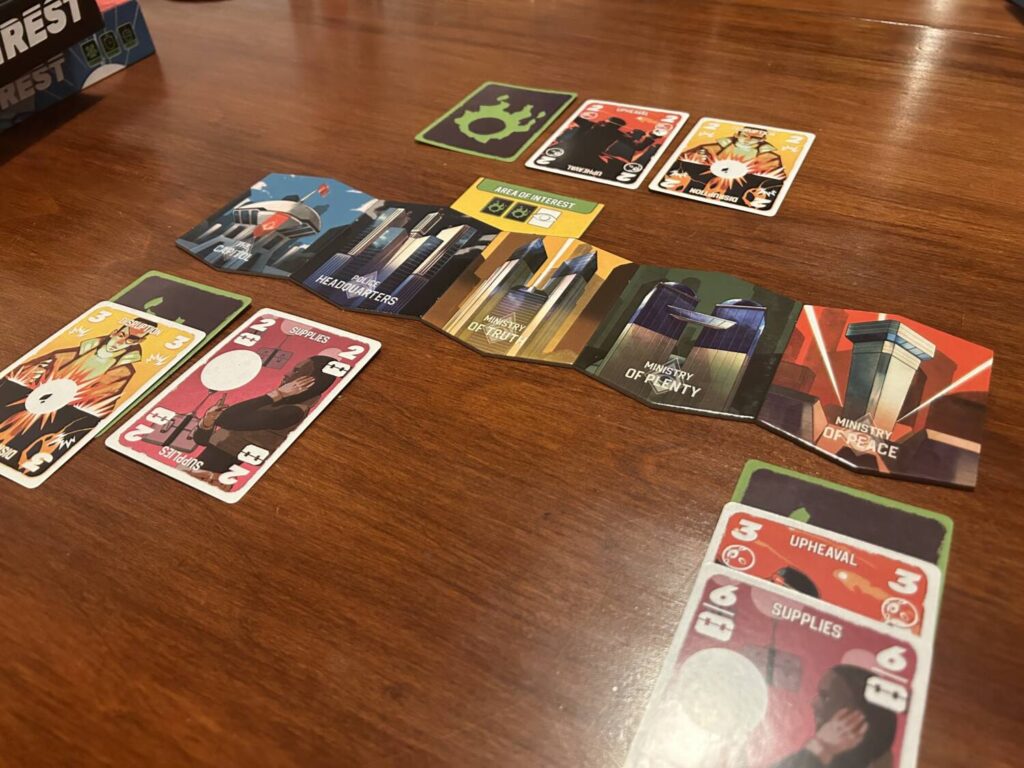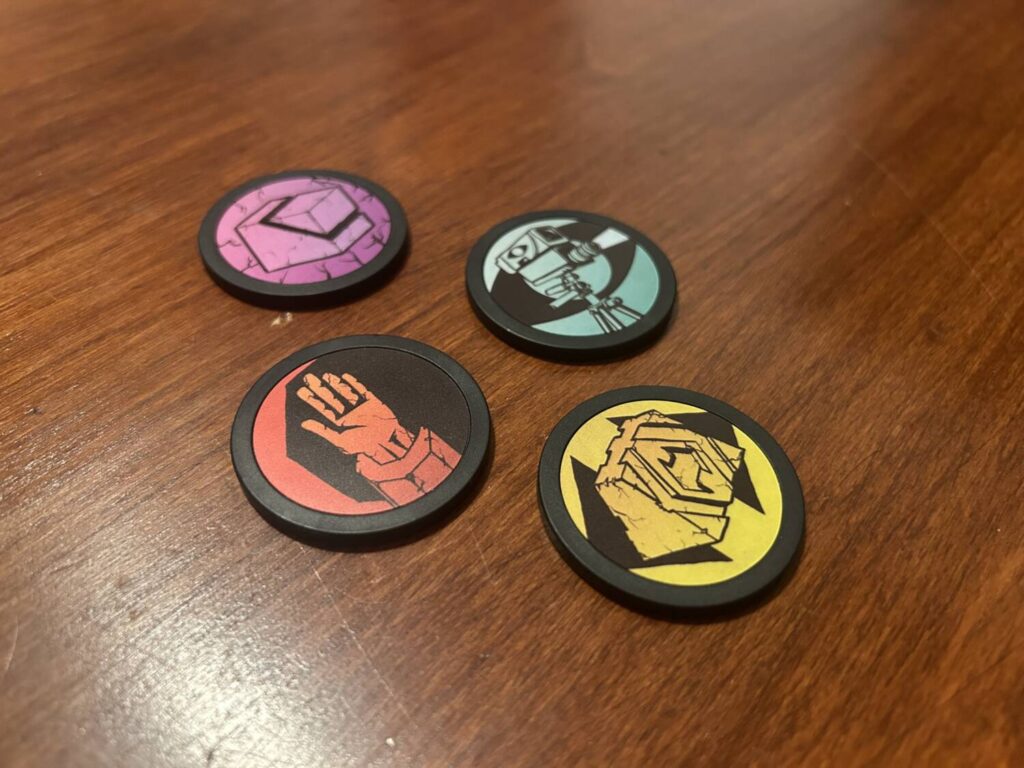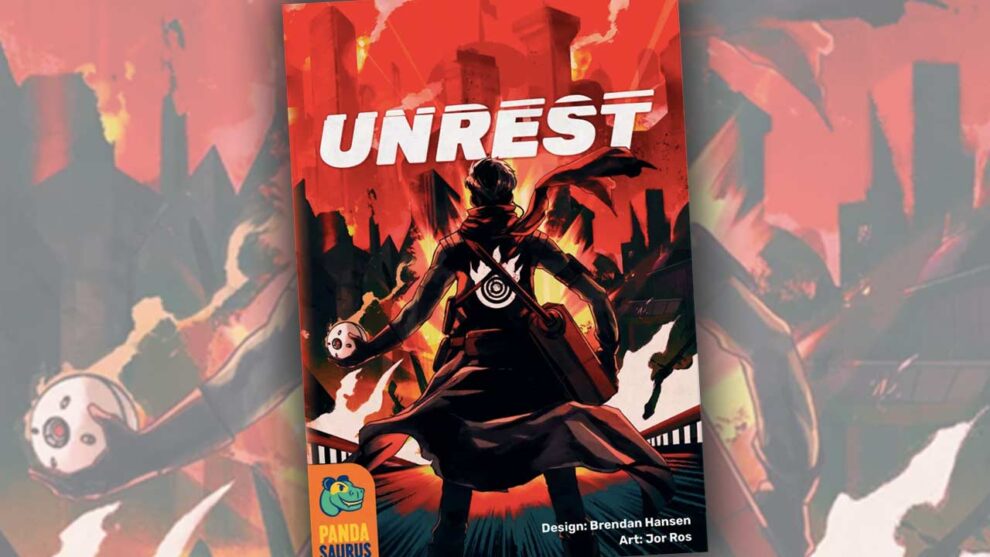Disclosure: Meeple Mountain received a free copy of this product in exchange for an honest, unbiased review. This review is not intended to be an endorsement.
I adore “I split, you choose” mechanisms. They are exactly the kind of player interaction that I like, where everything hurts for everyone. Hanamikoji is a recent personal favorite. I find myself looking at copies of The Great Split more often than I should, given the number of games I have to play. Even games without strict “I split, you choose” arrangements, like The Field of the Cloth of Gold and District Noir, never fail to delight me.
Given that, Unrest seemed like a sure bet. One player, the Rebellion, chooses three cards from their hand to play, and the other player, the Empire, uses two actions to interfere. Simple, streamlined, obstructive. What’s Not to Like?
Round and Round
There’s (slightly) more to it than that. The Rebellion is attempting to seize control of three of the city’s five Districts, by fulfilling the requirements of Missions randomly dealt out at the beginning of the game. The Rebellion deck consists of cards in four suits, numbered from 2 to 6. The Missions call for things like four or more in value from two different suits, or a straight of four cards. If any of those requirements is met at a location, it falls under Rebellion control.

Each round follows an identical flow:
The Rebellion chooses two adjacent locations, then selects those three cards from a hand of five. Two are played facedown, and the third is placed faceup. Deciding which card to put faceup is the richest decision in the game, arguably the only rich one. Because the Missions are public knowledge, you can use the faceup card to misdirect and bluff. The Empire is constantly second-guessing what they do and don’t know.
Once the cards are placed on the table, the Empire chooses two of its four actions. They can destroy a card, move a card, flip a facedown card, or prevent the Rebellion from placing any cards at one of the two possible locations this turn. The actions are available in two-round cycles; whichever actions you use on turn one, you have to use the others on turn two, then they’re all available again.
The Rebellion places their three cards between the two Districts selected that round. The cards can all go in one, or get split between the two. If any Missions are completed at that point, the Rebellion takes control of that region. Finally, the Rebellion draws back up to five cards.

What’s Not to Like
Unrest is half a game. That half is pretty good! Leading the Rebellion is tense and sweaty, full of uncertainty and bluffing. Deciding which Districts to pick given your hand, and which cards to play in what arrangement, is a lot of fun.
Playing as the Empire, on the other hand, is nondescript at best. You make the occasional good choice, but more often than not you feel like you’re killing time, performing actions that might or might not have any impact. More than that, your turns are so brief, while the Rebellion’s are (comparatively) long.
There’s a promising idea here, but the play experience is too one-sided. Unrest is a 2-player game that forgot to include the game for the second player.












A very good review.
And a sad one. It looks like the half-a-game they did design is kinda cool…